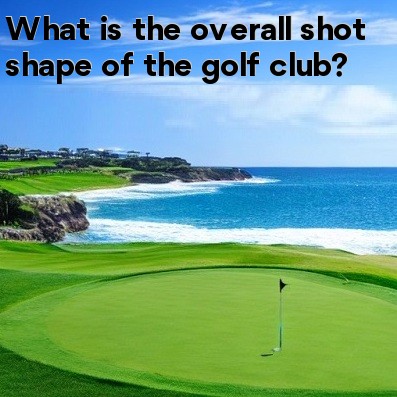
The Overall Shot Shape of the Golf Club
When it comes to golf, understanding the shot shape of the golf club is essential for players of all levels. Shot shape refers to the trajectory and curvature of the ball flight as it travels through the air. Every golf shot has a unique shape, influenced by factors such as the clubface angle, swing path, and impact dynamics. Let's take a closer look at the different shot shapes in golf:
- Straight Shot: The straight shot is the ideal shot shape that all golfers strive to achieve. It starts on the target line, travels straight through the air, and lands near the intended target. A straight shot requires a square clubface at impact and a swing path that aligns with the target.
- Draw Shot: A draw shot is a controlled right-to-left shot shape for right-handed golfers (left-to-right for left-handed golfers). It starts slightly right of the target and then curves back towards the left. To produce a draw, the clubface is slightly closed at impact, creating sidespin on the ball.
- Fade Shot: Opposite of a draw, a fade shot is a controlled left-to-right shot shape for right-handed golfers (right-to-left for left-handed golfers). It starts slightly left of the target and then curves back towards the right. To produce a fade, the clubface is slightly open at impact, creating sidespin in the opposite direction of a draw.
- Hook Shot: A hook shot is an extreme right-to-left shot shape for right-handed golfers (left-to-right for left-handed golfers). It starts significantly right of the target and dramatically curves back towards the left. A hook occurs when the clubface is closed excessively at impact, resulting in a strong sidespin that magnifies the curvature of the shot.
- Slice Shot: The slice shot is the opposite of a hook, being an extreme left-to-right shot shape for right-handed golfers (right-to-left for left-handed golfers). It starts significantly left of the target and dramatically curves back towards the right. A slice is caused by an open clubface at impact, leading to a sidespin that promotes the curve.
Understanding the shot shape of the golf club can greatly benefit a golfer's game. By intentionally manipulating the shot shape, golfers can navigate around obstacles on the course, take advantage of certain hole layouts, or adjust for wind conditions. Skilled golfers can rely on their ability to shape shots to gain an edge on their competitors.
It's important to note that mastering shot shaping requires practice and a deep understanding of the golf swing mechanics. Factors such as grip, body alignment, and swing tempo also play a significant role in producing consistent shot shapes. Working with a golf instructor or coach can be immensely helpful in honing the skills needed for shot shaping.
In conclusion, the shot shape of the golf club refers to the trajectory and curvature of the ball flight. From the straight shot to various controlled fades and draws, and extreme hooks and slices, each shot shape has its own characteristics and requires specific clubface angles and swing paths. By becoming proficient in shot shaping, golfers can elevate their game and tackle even the most challenging golf courses with confidence.





